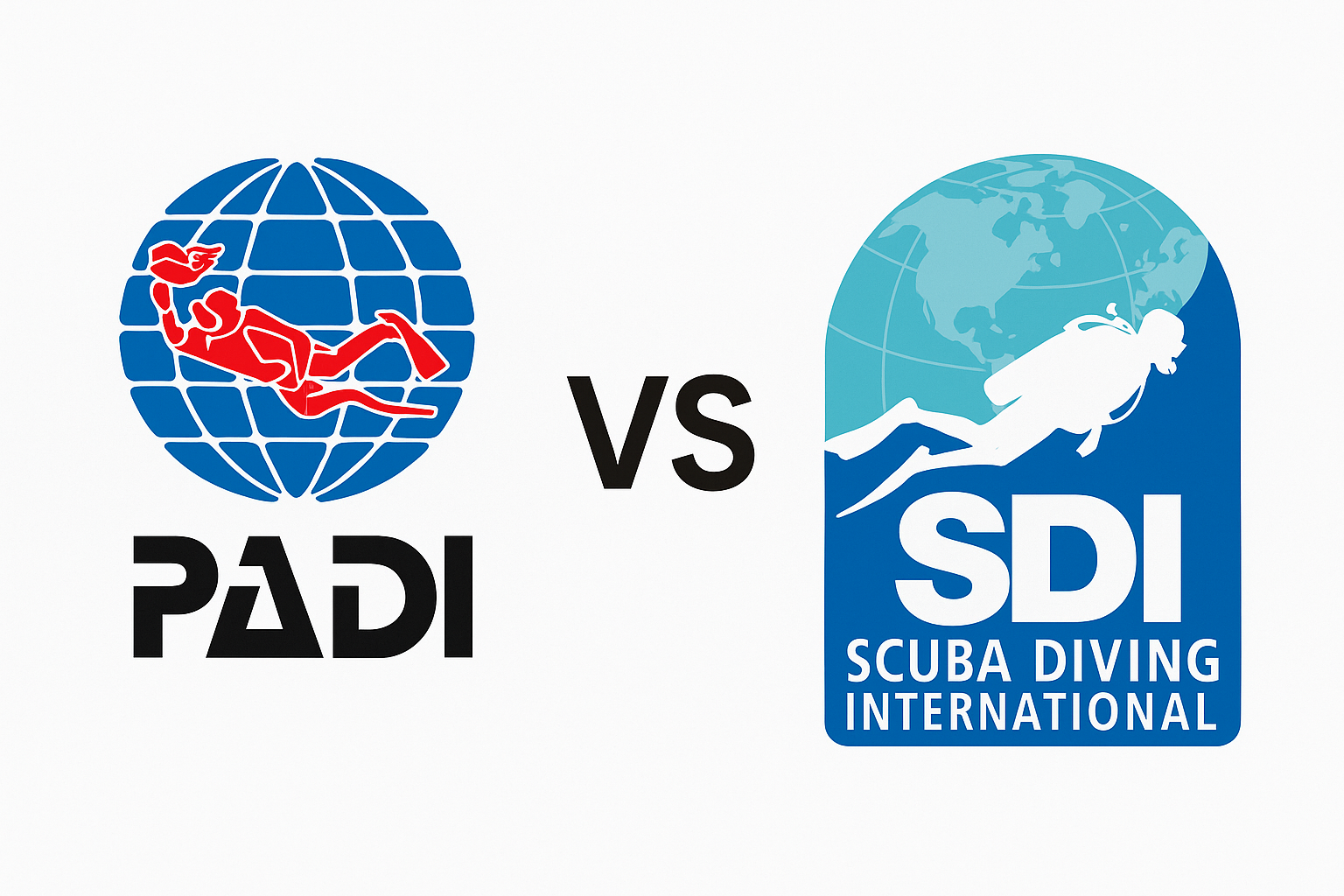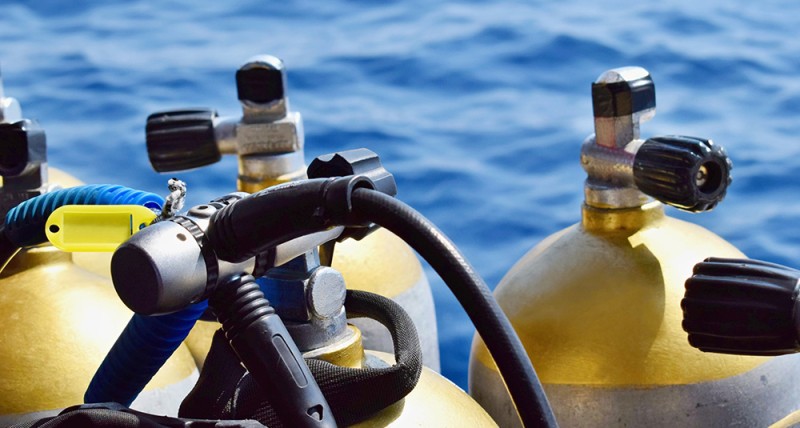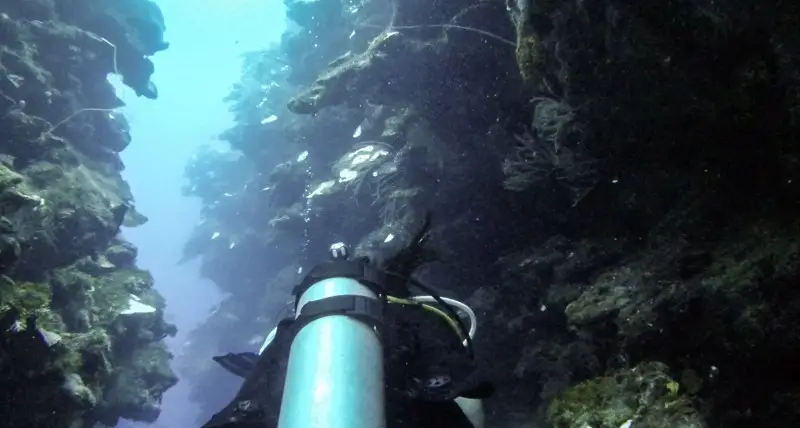Why I Now Offer SDI Courses Alongside PADI: Helping You Choose the Right Path in Scuba Diving
I have been teaching scuba diving through PADI (Professional Association of Diving Instructors)—the world’s largest and most recognized scuba certification agency. Many of my students earned their very first scuba certification through PADI courses, and I have immense respect for the organization and the training standards it maintains.
But recently, I made the decision to add another option to the lineup of scuba courses I offer: SDI (Scuba Diving International). This decision wasn’t made lightly. I’ve thought carefully about my students, their different goals, and how to make scuba diving more accessible without compromising safety or quality.
So why offer SDI courses in addition to PADI? And more importantly, what does this mean for you if you’re considering learning how to scuba dive?
In this article, I’ll break down the reasoning behind my decision, explain the differences between the two agencies, and help you understand which might be the better fit for your personal goals. There’s no “right” or “wrong” choice—just the path that makes the most sense for you.
A Little Background: Who Are PADI and SDI?
Before we compare, it’s worth understanding who these two organizations are.
PADI – The Big Name in Scuba
Founded in 1966, PADI is the largest scuba training organization in the world, certifying millions of divers across almost every country. If you’ve heard of scuba diving, chances are you’ve heard of PADI. Its strength lies in global recognition, a standardized curriculum, and its sheer reach. Dive centers everywhere—from small Caribbean islands to remote Pacific destinations—are used to seeing PADI cards.
SDI – A Modern Approach to Scuba
SDI (Scuba Diving International) was created in 1999 as the recreational arm of TDI (Technical Diving International), one of the most respected names in advanced and technical scuba training. That background means SDI has strong credibility, but with a fresh, modern perspective.
SDI courses were among the first to use digital training materials extensively, and the organization places a big emphasis on making scuba accessible to recreational divers.
Today, SDI is a well-respected, globally recognized certification agency—accepted at dive shops and on liveaboards worldwide. It may not have the same brand awareness as PADI among casual vacationers, but within the scuba community, it’s recognized as a strong, professional alternative.
Why I Decided to Add SDI Courses
There are three main reasons I chose to add SDI to my course offerings:
Accessibility through price
SDI’s course fees are lower than PADI’s. That doesn’t mean the training is “cheaper” in quality, but simply that the agency charges instructors and dive professionals less for course materials and certifications. As a result, I can pass those savings directly on to my students.For people who are curious about scuba but hesitant because of cost, this can make all the difference. It’s an opportunity to learn safely and affordably without cutting corners.
Flexibility for different goals
Not everyone who comes to me for training wants to become a professional dive instructor someday. Many people simply want to learn to dive for recreational purposes—on vacations, local trips, or with friends and family. SDI is an excellent option for these students, as the training is designed with recreational divers in mind.If, however, someone’s long-term dream is to work in the dive industry, PADI may still be the more strategic path, since some businesses prefer or even require PADI-certified professionals. By offering both, I give my students the choice.
Recognition and respect
SDI certifications are recognized worldwide. Whether you’re diving in Florida, Fiji, or the Red Sea, an SDI card will be accepted. I’ve spoken with countless dive operators who are equally comfortable welcoming SDI- and PADI-trained divers. That global recognition means my students won’t be limited in their dive travel plans.
Comparing PADI and SDI: What You Need to Know
Let’s take a closer look at how these two agencies compare, so you can make an informed decision.
1. Global Recognition
PADI: The most widely known name in diving, with the largest market share worldwide.
SDI: Recognized globally as well, but less of a household name outside the scuba community. Within the industry, dive shops respect and accept SDI certifications without issue.
Takeaway: For everyday diving experiences, both will serve you equally well.
2. Training Standards
PADI: Strongly standardized curriculum with a long track record of safety and consistency.
SDI: Meets the same international ISO standards as PADI and other major agencies. Because SDI is newer, its materials and approach can feel more modern and streamlined, especially in digital learning.
Takeaway: Both offer excellent training. Neither cuts corners on safety or skill development.
3. Cost
PADI: Slightly higher fees, especially for course materials and certification processing.
SDI: Lower fees, allowing me to offer courses at a more affordable price point.
Takeaway: If cost is a deciding factor, SDI can be a very appealing choice without sacrificing quality.
4. Professional Pathways
PADI: The go-to option for those pursuing a professional career in diving (Divemaster, Instructor, etc.), simply because of its dominance in the industry.
SDI: Offers professional pathways as well, and instructors are highly respected. But some employers—particularly large resort operations—may specifically prefer PADI credentials.
Takeaway: If your dream is to work in the dive industry, PADI may give you a slight edge. If you’re diving for recreation, SDI is more than sufficient.
5. Student Experience
PADI: Traditional materials with strong support infrastructure, both online and offline.
SDI: Early adopter of digital learning, making the study portion convenient and modern. Some students find SDI’s materials easier to engage with.
Takeaway: If you value a modern, digital-first experience, SDI may be the smoother path.
Who Should Choose SDI?
SDI is a fantastic choice if:
You want to learn scuba diving for recreational purposes.
You’re price-sensitive but don’t want to compromise on safety or quality.
You like the idea of a modern, digital-first learning experience.
You’re not planning to pursue a professional career in scuba instruction.
Who Should Choose PADI?
PADI is the better fit if:
You’re considering a long-term or professional path in scuba diving.
You like the reassurance of having the most widely recognized certification in the world.
You plan to dive extensively at resorts or operations that may lean toward PADI.
There’s No Wrong Choice
Ultimately, both PADI and SDI will get you to the same place: a safe, confident diver, trained to international standards, and ready to explore the underwater world.
The choice comes down to your goals, your budget, and what kind of learning experience you’d prefer.
If cost is a barrier, SDI opens the door without lowering standards.
If you’re pursuing scuba as a career, PADI might give you a slight advantage.
If you’re diving purely for fun, either certification will serve you equally well.
I often tell my students: The best course is the one that fits your life.
Why This Matters to Me as an Instructor
For me, teaching scuba isn’t just about helping people check off a certification card. It’s about making the underwater world accessible, exciting, and safe for as many people as possible.
By offering both PADI and SDI, I’m removing barriers. I’m giving students choices. I’m helping people find the path that feels right for them, whether that means saving money, preparing for a professional dive career, or simply making scuba accessible on their next vacation.
I’ve seen firsthand how diving changes people—how that first breath underwater can spark a lifelong passion. And I believe no one should be held back from that experience because of cost or confusion about certification agencies.
My Promise to Students
No matter whether you choose SDI or PADI, here’s what doesn’t change:
Safety: You’ll learn skills to keep yourself and your dive buddies safe.
Quality: I uphold high training standards across both agencies.
Support: I’ll be with you every step of the way—through study, pool sessions, and open water dives.
Passion: You’ll learn from someone who loves diving and loves sharing that world with others.
The letters on your certification card are important, but they’re not the whole story. What matters most is the instructor you train with, the care put into your education, and your confidence as a diver.
Final Thoughts: Your Adventure Awaits
Adding SDI courses to my offerings is about giving you more freedom, more flexibility, and more choice. Scuba diving should be fun, approachable, and tailored to your needs—not a one-size-fits-all experience.
Whether you choose PADI or SDI, the underwater world is waiting. And trust me, once you take that first plunge, you’ll understand why so many of us fall in love with it.
So take the leap. Choose the path that feels right for you. And let’s go diving.




